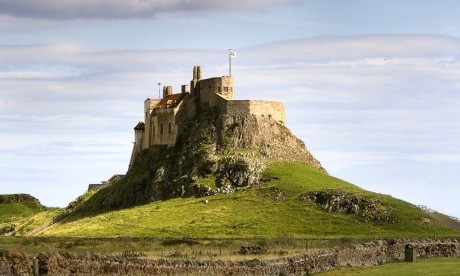In central London, a stone’s throw from St. Pancras rail station, is one of the world’s largest libraries, container of national treasures including the Lindisfarne Gospels, begun about the year 700. Recently another Anglo-Saxon Christian treasure, which predates the legendary Lindisfarne Gospels, has been added to the famed British Library’s trove, the St. Cuthbert Gospel of John.
This small, red, leather-bound volume with its beautiful calligraphy is now on exhibit and is reputed to be the oldest intact book in all of Europe. The library purchased the volume from the British Jesuits for the equivalent of $14 million.
The origins of these two English national treasures lead one far from the bustle of London to Northumbria, hemmed in by Scotland to the north and the turbulent sea to the east. It was in the early seventh century that the Anglo-Saxon King Oswald invited Aidan, a monk from the island of Iona, to evangelize his people.
Aidan, later called the “Light of Northumbria” founded a primitive Christian community of monks on a small island in the North Sea. Their island, some three miles in length and a mile wide, is Lindisfarne, later called Holy Isle, a place of retreat, a haven in a brutal world. From this outpost on the edge of the civilized world these monks spread the Gospel among the ancestors of the English people.
A journey to Lindisfarne is neither easy nor simple. To get there today one can travel by rail some three and a half hours north of London, skirting the walled city of York, bypassing the cathedral city of Durham to the west, calling at the coal-rich city of Newcastle Upon Tyne, and disembarking finally at the seaside town of Berwick-upon-Tweed, three miles south of the Scottish border. From there it is another eight miles to the island by any form of transport one can find. This rural countryside is green and lush. Sheep are ubiquitous and castles dot the landscape, reminders of the warfare that was for centuries endemic to this borderland.
One approaches Lindisfarne with caution. Much like Mont Saint-Michel off the coast of Normandy, it is the sea that rules here. It is perilous to ignore its tides. Twice a day the fast-rising waters of the North Sea flood the mile and a half causeway that joins the island to the mainland. Tide times and the corresponding crossings are posted everywhere, and locals in Berwick and the 150 permanent residents of the island organize their lives around them. Read more
Sources
- Dana Greene in National Catholic Reporter
- Image: Wikipedia
